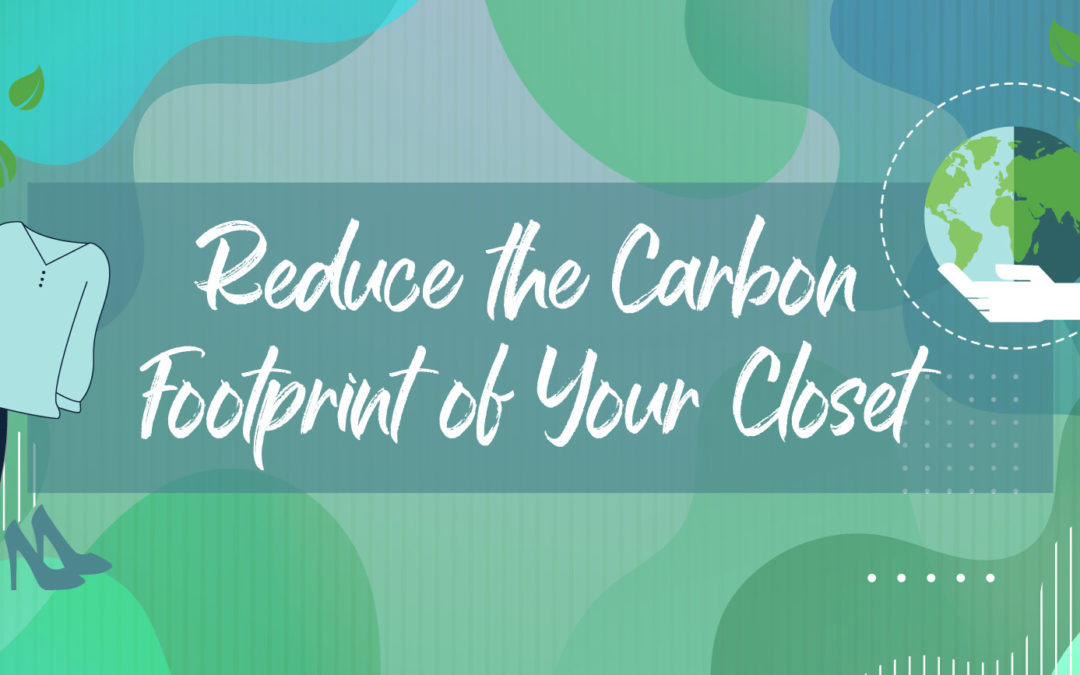When we think of protecting the planet, we think of recycling, using energy-efficient light bulbs, and shopping with reusable bags. We usually don’t think about our closets, but we should. The average North American tosses out 80 pounds of textiles per person per year. That’s 320 pounds of textiles for a family of four. When you multiply that by every family in your town, it’s easy to see how clothing choices can be a big factor in our contribution to environmental problems.
But, it doesn’t have to be that way. Here are several simple steps that can dramatically cut back on the carbon footprint of your closet.
Buy High-Quality Clothing
There’s a reason we all know the expression, “you get what you pay for.” The fact is high-quality clothing lasts longer than “fast fashion” items. While it may mean a little more upfront cost, you’ll save money over time when you’re not replacing worn-out items every few months. And if you’re not replacing those items, they’re not ending up in a landfill. As a bonus, higher-quality brands often also use more sustainable sourcing practices.
Strategically Buy Multi-Function Pieces
Multi-function items can extend your wardrobe without buying additional pieces. Leggings are great for casual wear and they can be dressed up for date night. A jacket can complete your business look and still look great with jeans. Because quality clothing is an investment, be strategic about replacing existing items. First, purchase the item or two you’ll wear the most, and then gradually swap out items. This way you’re lowering your carbon footprint without breaking the bank or sacrificing your style.
Read the Labels
Know what your clothing is made from. Choose pieces that are made using recycled materials and from sustainable sources. The same plastic that goes into single-use water bottles can be recycled for textiles, so not only will you be keeping worn clothing out of landfills, you’ll be keeping plastic out too.
Many of us assume natural fibers are more environmentally friendly, but this is not always true. Farming practices are an important consideration when weighing natural fibers against synthetics. Look for brands working toward sustainability and conservation of resources like water, paper, and packing materials.
Where You Shop Matters
Retail stores produce a lot of greenhouse gasses over the course of a year. Purchasing through warehouse-to-buyer models is often a more efficient way to get the quality pieces you need without the negative impact on the environment.
Other considerations include packaging and shipping waste. We’ve all received a giant box with a tiny item inside, but more responsible brands use recycled or biodegradable packing materials and reduce the amount used in shipping. When you’re considering a new brand, ask how they handle their overstocks. Are they throwing away unsold items or redistributing them to discount centers across the country? Or, do they donate unsold goods to local charitable organizations?
Avoid the Dryer
When possible, air-dry your freshly cleaned laundry. You’ll be reducing your energy consumption (and your utility bills), and you’ll extend the wear and fit of your clothing. If this isn’t an option, try setting the dryer on a cooler setting or drying for less time, then let your clothing finish drying on a hanger. This small change won’t just save you money and energy, it will dramatically extend the life of your favorite pieces.
Detergent Matters
Many budget laundry detergents contain chemicals that can be toxic to local waterways. Almost as bad, these same detergents can reduce the life of your clothing. Gentler detergents won’t contaminate the environment and their cleaning agents won’t degrade the fabric of your clothing. Often, eco-friendly detergents are even sold in packaging made recycled materials, which is a bonus. Some brands sell refills packaged in pouches so you can reuse your larger plastic bottles. Refill pouches are often less expensive, too, because you’re not paying for a bulky plastic bottle.
Donate
We all have items in our closet that we’re never going to wear again. Instead of throwing them out, invite a group of friends over and host a clothing swap. Your unwanted clothing stays out of the landfill and you get to shop from your friends’ closets. Donate any remaining clothing items to thrift stores or shelters that serve people in need. You’ll be helping your neighbors and protecting the planet at the same time.
Upcycle
Are you handy with a sewing machine? Upcycling may be for you. Transform worn or unwanted items into something new. Strips of cloth can be turned into rag rugs. Shirts can be turned into quilt pieces. And did you know you can cut up leggings to make headbands, hair ties, and even lampshades? Or, create new clothing items by combining pieces or removing features like sleeves and pant legs. A fun and easy way to get started is to create your own Halloween costume from items you were ready to discard.
Recyle
Sometimes old clothing can’t be upcycled or donated because it’s too worn. You may still be able to give them new life in other ways. Old socks make great dusting mitts. Cut-up sweatshirts make great cleaning rags. T-shirts make perfect towels for curly hair or even garage rags. If all else fails, you can even find organizations that will grind up and recycle your old clothing.
Reducing the carbon footprint of your closet doesn’t have to be difficult or expensive. With a little research and creativity, you can easily slash your contribution to landfills by half or more.

